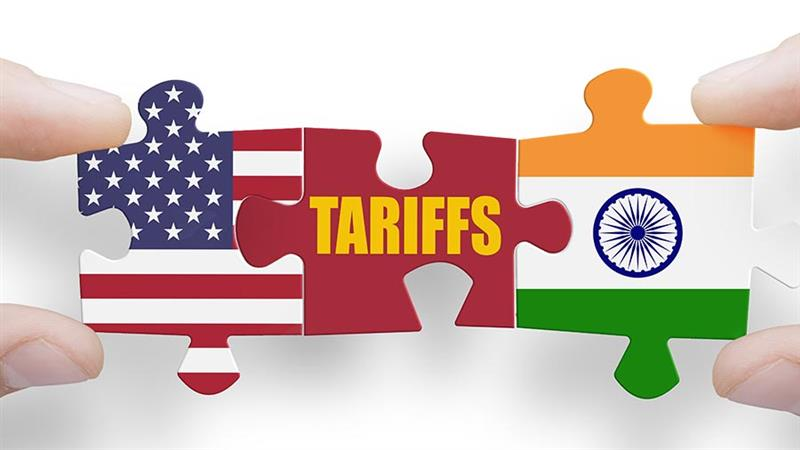India U.S. Trade Impact: How Tariffs Are Reshaping Export Strategy

In recent weeks, the India U.S. trade impact has become a major talking point across economic and policy circles. The United States’ decision to impose a 25% tariff on a range of Indian exports has shaken up India’s trade landscape. This development comes at a time when India is striving to become a $5 trillion economy and strengthen its global trade presence. As a result, the news has not only rattled stock markets and weakened the rupee but has also triggered an important national conversation about trade dependency, self-reliance, and strategic diversification.
In this blog, we will break down the impact of these tariffs, the sectors most affected, the response from the Indian government and businesses, and the long-term opportunities this challenge presents. Whether you’re a student of economics, a policy analyst, or simply a concerned citizen, this humanized and SEO-friendly guide will help you understand what the India U.S. trade impact means for the country’s economy and how the nation is responding.
1. Understanding the India U.S. Trade Impact and Tariff Policy
The United States has announced a 25% tariff on selected Indian goods as part of a broader move to recalibrate trade relations and encourage domestic manufacturing. While political motivations may vary, the immediate impact is a price disadvantage for Indian exporters in the American market. For more detailed updates, you can refer to this Reuters article.
2. India U.S. Trade Impact on GDP and Key Export Sectors
According to Reuters, analysts estimate that these tariffs could shave off up to 40 basis points from India’s GDP growth in the fiscal year 2025-26. Affected sectors include textiles, automotive components, electronics, and pharmaceuticals—all of which have significant exposure to U.S. markets.
Furthermore, the Indian rupee also reacted sharply, nearing record lows. As a result, foreign investors pulled out of equities, and bond markets saw increased volatility.
3. Government Response to India U.S. Trade Disruption
Finance Ministry officials have emphasized the importance of strengthening India’s internal economic fundamentals. The Reserve Bank of India (RBI) is expected to hold interest rates steady, focusing instead on inflation management and forex stabilization.
Meanwhile, the Commerce Ministry is accelerating efforts to diversify export markets, focusing on trade agreements with the European Union and ASEAN nations. Visit the Ministry of Commerce official site for the latest updates.
4. Business and Corporate Reaction to India U.S. Trade Impact
Consequently, Indian corporates are responding by ramping up domestic capacity and exploring alternative markets. Leaders like Harsh Goenka have advocated for strengthening ties with Europe and Southeast Asia, highlighting the need to reduce over-dependence on U.S. markets.
Moreover, startups and SMEs, often more agile, are tapping into digital platforms to identify new international buyers. In addition, many are investing in quality improvements and branding to meet global standards.
5. Atmanirbhar Bharat and India’s Export Resilience Strategy
Rather than being purely a setback, this moment serves as a wake-up call. The “Atmanirbhar Bharat” initiative launched in 2020 is gaining renewed momentum. This includes:
- Incentives for local manufacturing
- Investment in infrastructure and logistics
- Encouragement of R&D in critical sectors
- Promotion of “Made in India” products globally
As a result, India is also focusing on increasing value-added exports instead of just raw or semi-finished goods.

6. The Role of Technology and Innovation
Technology is proving to be a strong ally in this transformation. For instance, AI-powered supply chain tools, automated quality checks, and data-driven export forecasting are helping businesses stay agile.
In addition, India is also investing in tech-driven manufacturing zones and special economic corridors. The integration of Industry 4.0 technologies is expected to make Indian goods more competitive on a global scale.
7. Consumer Perspective: What Does It Mean for You and Me?
Admittedly, tariffs may not immediately affect domestic prices. However, they influence the larger economic narrative. Reduced export earnings can impact job creation, especially in manufacturing hubs.
On the positive side, the shift towards self-reliance and domestic production also means more job opportunities, skill development, and innovations that could benefit consumers in the long run.
8. Global Perception and Strategic Alignment
Global observers are watching how India navigates this challenge. Successfully managing it would signal India’s readiness to become a resilient global economic power.
Moreover, this moment aligns well with India’s G20 leadership goals of sustainable, inclusive growth and South-South cooperation. Learn more from the G20 India Presidency site.
Conclusion: A Challenge Worth Embracing
To conclude, the 25% U.S. tariff on Indian exports is undeniably a disruptive force. But within this disruption lies a transformative opportunity. It is pushing India to rethink its economic strategy, deepen its manufacturing base, and strengthen its global trade partnerships.
Ultimately, this is a pivotal moment—not just for policymakers or industrialists, but for every Indian who believes in the country’s potential. Let this be the spark that turns adversity into innovation and ambition into achievement.
FAQs: India U.S. Trade Impact
1. What is the India U.S. trade impact in 2025?
To begin with, the India U.S. trade impact in 2025 refers to the economic consequences India faces due to the newly imposed 25% tariffs by the U.S. on selected Indian exports. As a result, Indian exporters are experiencing reduced competitiveness in the American market.
2. Which Indian industries are most affected by the new U.S. tariffs?
Primarily, industries such as textiles, automotive components, electronics, and pharmaceuticals are bearing the brunt. These sectors rely heavily on the U.S. for exports. Consequently, these tariffs are disrupting their revenue streams and planning.
3. How will the U.S. tariffs affect India’s GDP?
As per market analysts, these tariffs may reduce India’s GDP growth by approximately 40 basis points in the fiscal year 2025–26. Therefore, the impact is likely to be felt across export-driven regions and manufacturing clusters.
4. What is India doing in response to the U.S. tariffs?
To counter this, India is accelerating export diversification, strengthening trade with the EU and ASEAN, and pushing for domestic manufacturing under its Atmanirbhar Bharat mission. Furthermore, the government is supporting exporters with policy incentives.
5. How does the India U.S. trade impact affect common citizens?
Interestingly, while consumers may not see immediate price hikes, the long-term impact can include slower job creation and reduced economic momentum. On the other hand, the push for domestic growth may generate local employment opportunities.
Facing challenges due to recent trade changes?
Talk to our experts about navigating the India U.S. trade impact and strengthening your global strategy. Connect with us today.
#IndiaUSEconomy #GlobalTrade #AtmanirbharBharat #IndianExports #TradeDiversification #ExportStrategy #TradePolicy #IndoUSRelations
You May Also Like

January 7, 2025
Distributed Tracing: The Magic wand to debug applications in Distributed System
Read More

Don't miss Our Update. Subscribe us for more info.
Request Quote
What type of solution you are seeking?
Please Select One
Your estimated budget
Please Select One
 Hepmade
Hepmade 
 Automation
Automation 